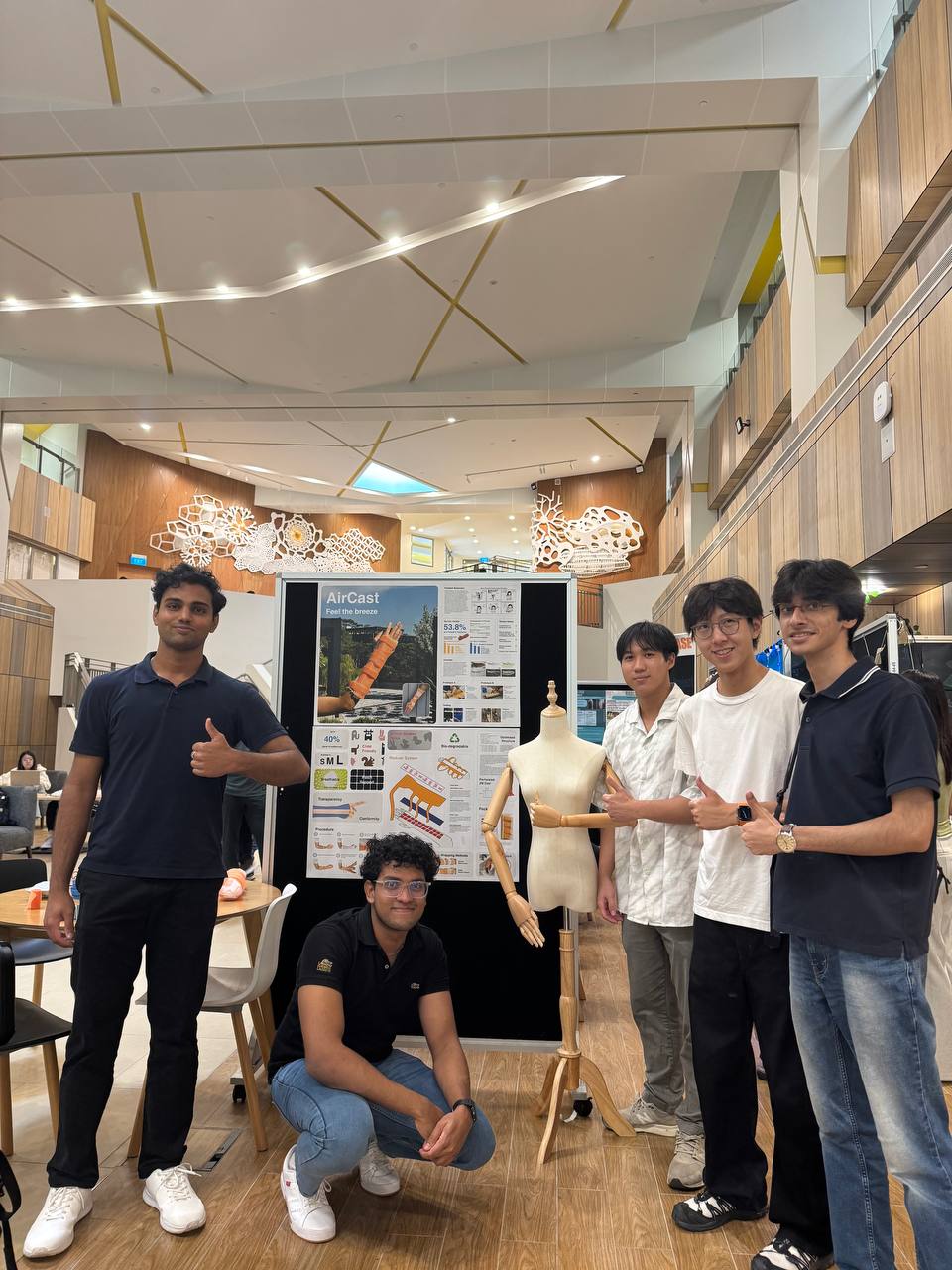What it does
Our lightweight, breathable, water-resistant cast solves the problem of discomfort and restricted movement for children with broken bones. It enhances comfort, hygiene, and daily activity, improving healing over traditional casts.
Your inspiration
Traditional pediatric casts are often bulky, heavy, and poorly ventilated, leading to discomfort, itching, and skin irritation. Made from plaster or fiberglass, they restrict movement, complicate daily activities, and create frustration for young patients. This new design takes inspiration from lightweight, flexible structures in nature. Bird bones, with their hollow forms and internal bracing, offer strength with minimal weight. Insect wings show how delicate structures can remain flexible and resilient. By applying these natural principles, the cast achieves strength, lightness, and adaptability, mirroring nature’s efficiency and elegance.
How it works
Our design improves on traditional plaster casts for children by focusing on materials and structural innovation: Lightweight Material: We use a biocompatible, lightweight polymer or composite to reduce weight and minimize discomfort. Breathable Structure: A mesh or lattice design enhances airflow, reduces moisture build-up, and prevents skin irritation through well-placed ventilation channels. Water-Resistant: The cast is made from or coated with water-resistant materials, allowing kids to bathe and enjoy water activities without compromising hygiene. Custom Fit & Support: Digitally modeled for a tailored fit, the cast offers support and variable rigidity based on fracture type. Hygiene & Comfort: Ventilation aids temperature regulation and minimizes itch for comfort. Reduced Bulk & Mobility: Slimmer than traditional casts, it improves movement and ease in daily tasks. Tech Integration: X-ray translucency reduces the need for removal during imaging.
Design process
Step-by-Step Design Process for Improved Paediatric Cast Problem Definition & User Research: • Identified issues with traditional casts: discomfort, itchiness, limited mobility, and hygiene. • Interviewed pediatric clinicians and children to understand needs. • Observed children’s daily activities to spot improvement areas. Concept Generation & Ideation: • Explored various materials. • Sketched concepts like lattice designs and airflow channels. • Considered modular and adjustable fits for growth and various fractures. Material Selection & Low-Fidelity Prototyping: • Selected lightweight, biocompatible, water-resistant materials. • Built early prototypes with cardboard and mesh to test flexibility and airflow. • Used simple molds to explore cast shapes and sizes. Digital (High-Fidelity) Design: • Created detailed 3D CAD models incorporating airflow structures and materials. 3D Printing & Rapid Prototyping: • 3D printed functional prototypes; tested for fit, comfort, airflow, and water resistance. • Refined based on feedback. User Testing & Feedback: • Tested with pediatric patients and clinicians. • Gathered feedback on comfort, hygiene, usability, and healing progress. Refinement: • Fine-tuned materials and manufacturing methods based on durability and user insights.
How it is different
Unlike traditional plaster or fibreglass casts, our design incorporates advanced materials and biomimetic structural engineering to directly address the shortcomings of conventional solutions. It is significantly lighter, more breathable, and water-resistant, allowing children to stay comfortable and active during recovery. The open, ventilated lattice structure improves hygiene by reducing moisture and skin irritation, while the customizable fit ensures optimal support for different fracture types. Additionally, our cast is translucent, eliminating the need for removal during follow-up imaging. These innovations combine to provide a more child-friendly, hygienic, and effective alternative to conventional casts.
Future plans
Conduct clinical trials to evaluate the safety and efficacy of the cast in real-world settings. Obtain necessary regulatory approvals for medical device use. Launch the product and made it available to clinicians and patients. Develop educational materials and training programs for clinicians. More users feedback. Exploration of smart cast technologies, such as integrated sensors for monitoring healing progress and activity levels. Possible development of biodegradable materials for future iterations.



Share this page on